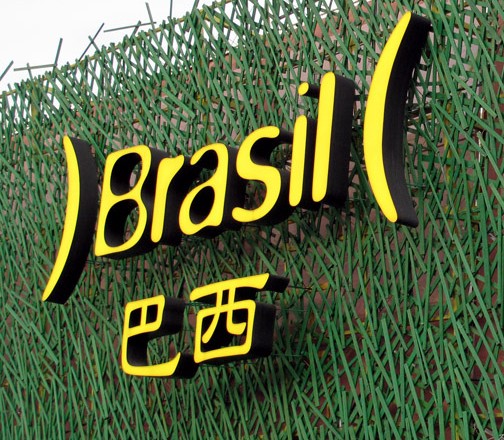China intends to reach every corner of the global village but Brazil is one of her most favorites destinations. What bind the two countries together is economic forces rather than the traditional symbols of Brazil: sun, coffee, football, and beautiful beaches. Brasilia and Beijing has developed a warm and pragmatic relationship that goes beyond the lucky acronym of Brics though once in a while tinged with some frictions. The two countries share as much common ground as differences, such as reducing poverty, playing a more important role in the world arena, and finally spreading a reputation as leading regional countries. The Brazilian leaders – Lula and then Roussef – did not hesitate to involve China in its national program; a choice implies economic implication and tolerance towards a different vision of the world’s progress.
The so called “south-south axis” between emerging powers is fostered by years of cooperation. In 2009 China replaced the long-standing supremacy of the US to become the biggest trading partner for Brazil. Still in 2010 China is the largest importer and the second exporter to Brazil. In the last decade, export to China grew by 18 times, while import from the Middle Kingdom last year increased by 60%. The exchange is easy to interpret: raw materials for industrial products. Minerals and food produces buy machinery and consumer goods. Investments too are on the rise. Two years ago China became the biggest investor in Brazil, with 32% of all capitals that reached the South American giant. Politically, the two countries are allied on many issues, ranging from climate change, to subsidies, to the agriculture sector, to the fight against poverty. They are often in antagonism with the positions of the West.
But some contradictions emerged in Brazil. Intellectual circles, the press and some politicians argued that China is getting the biggest share from the friendship with Brazil. China’s products are good and cheap, an easy target for an economy growing every year. In the face of this unbeatable competitor, the national industry is difficult to blossom. Last February, the public was shocked to find that the costumes for the Rio Carnival were all made in China. In addition, Brazilian capitals are frequently invested in China, not in the homeland. As a paradox, Brazil did not become an industrial powerhouse like it should like, even if its economy is doing very well. Its GDP is now the 5th biggest in the world. More importantly, the breakdown of its export is worrisome, since in 2002 raw material had a share of 28% of the total. Seven years later, the percentage is 41%.
Obviously, the Brazilian government has accepted some complaints from the civil society, because custom duties, even if tolerable, have been imposed on toys, footwear and tires from China. In addition, a new law will forbid selling national land to state sovereign funds. In conclusion, Brazil might make few adjustments, since the contradiction between the two countries is obviously caused by the disproportionate benefits collected by China. Nevertheless, the reciprocal advantages are by large bigger. Once the two giants understood they can get along, the rest will be only a problem of fine tuning.

EconomicsInternational Politics & Relations
China and Brazil, A “South-South Axis”
Alberto Forchielli24 Gennaio 20120
Share



















Lascia un commento